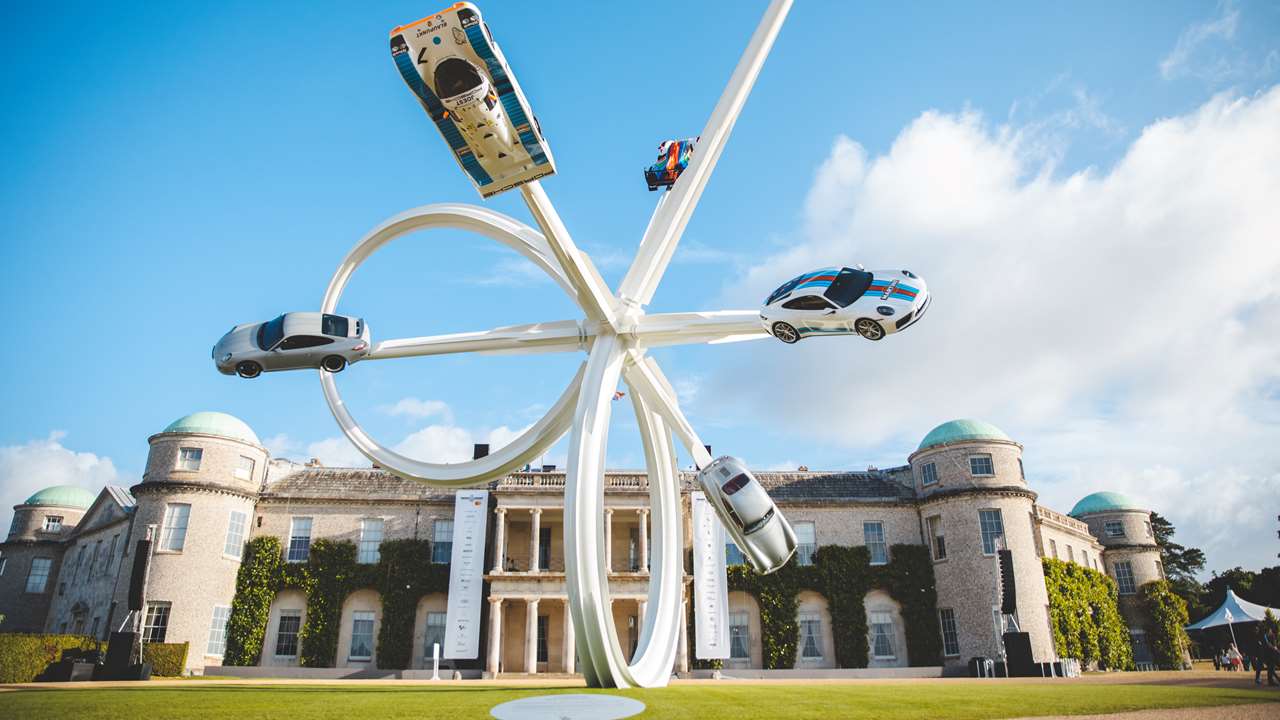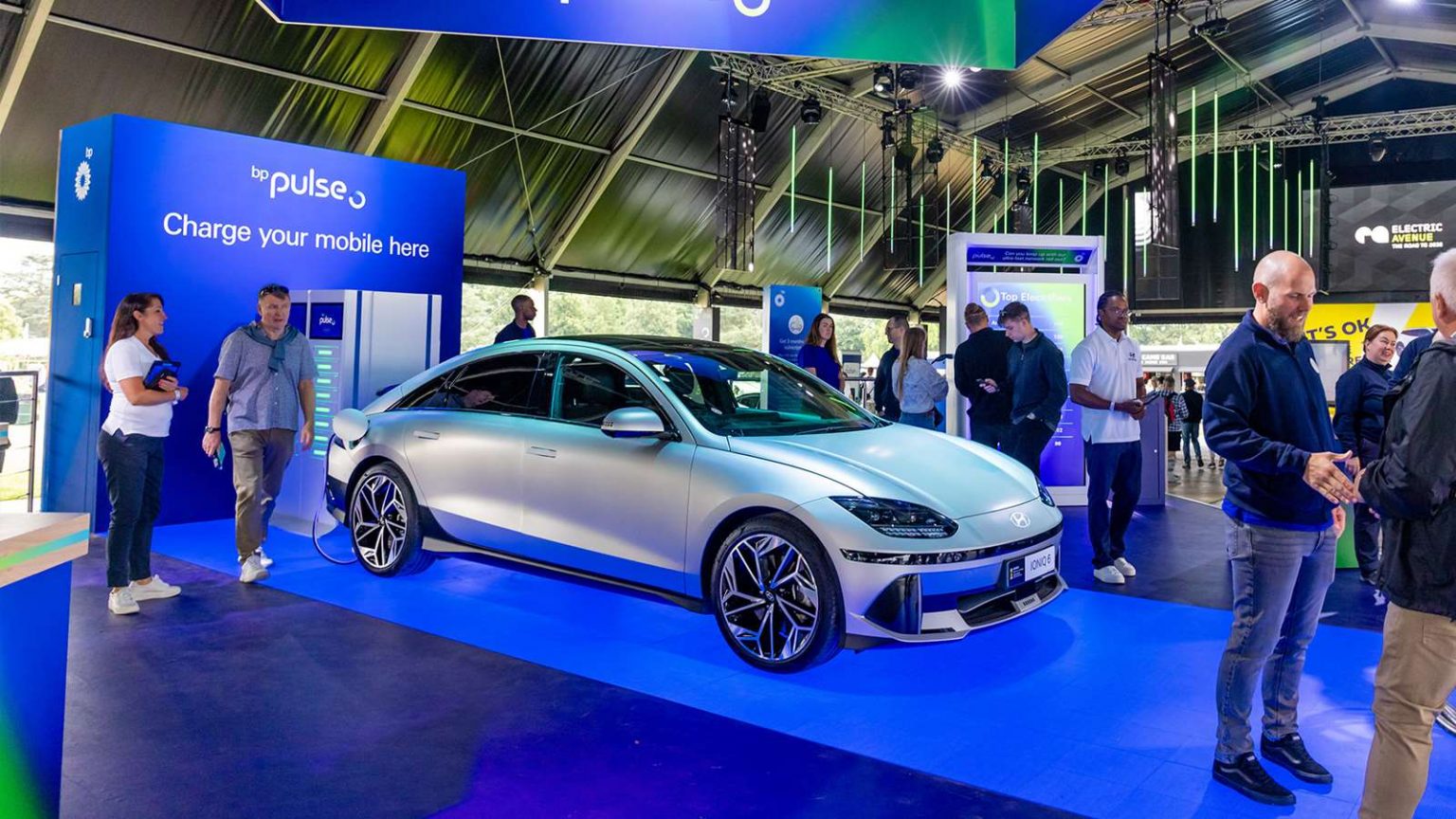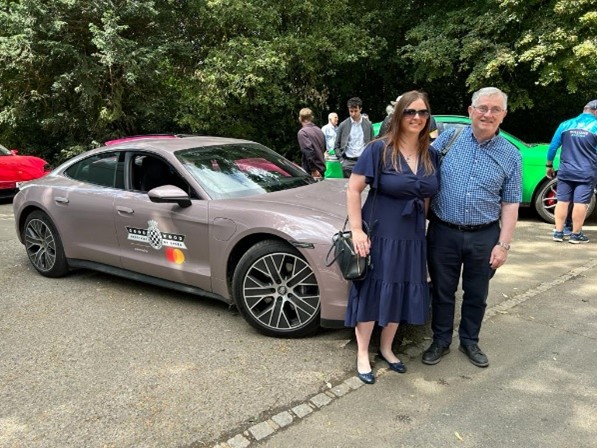Last weekend, thanks to a family friend, I was lucky enough to receive Mastercard competition winning hospitality tickets to the Goodwood Festival of Speed, including a run up the iconic hill climb track in an electric Porsche Taycan. As lifelong motorsport fans, my dad and I jumped at the opportunity, and despite high winds cancelling the event on Saturday, Sunday was a fantastic day.

Image: Kirsty Jayne Russell
With our work here at Aura on packaging sustainability, I was intrigued to see how the concept of sustainability could translate into a sport with such a carbon-heavy perception as motor racing. Much like in packaging, there have been some seriously bold sustainability commitments in the world of Motorsport, which in my opinion are going to be very challenging to achieve.
For example, the FIA (the governing body of global Motorsport) as an organisation achieved carbon neutrality in 2021, certified by ISO 14001:2015. However, this was primarily achieved by offsetting, which shouldn’t be the sole solution, as reduction and minimisation need to be a priority to go beyond neutrality and achieve net zero. Across the industry the FIA has also committed for every part of Motorsport to be net-zero by 2030, and to make all events sustainable by 20251. I admire the ambition, but what does this really mean, is it even possible in these short timeframes, and, as we always ask in packaging, is it backed up by real data?
Make way for electric
One thing is for sure, there is certainly a lot of focus and investment in the area, but I’ll reserve judgement on the results as it is just too early to tell. Having attended the Festival of Speed last in 2013 ten years ago, what struck me the most was just how much square footage in Goodwood Estate this time around, was dedicated to electric and ‘more sustainable’ vehicles.
In the very centre of the event sat Electric Avenue and Future Lab, displaying the latest in electric vehicles and future technologies across automotive and related industries. I must say it was an impressive display, and highlighted what manufacturers in the sport and the automotive industry more generally are doing to tackle the barriers to a more sustainable future.

Image: Goodwood
Previously, electric cars only really had two design routes: ‘opulent luxury’ where the first-to-market Tesla brand dominated and became a status symbol; or ‘quirky/futuristic’, making the electric vehicles stand out in comparison to petrol or diesel alternatives, but not necessarily to everyone’s tastes.
Through the Electric Avenue exhibition, it is clear that manufacturers are now approaching design of electric vehicles much more holistically. Electric alternatives are now being viewed as an extension to their petrol/diesel ranges, using their signature brand identity markers to provide the same cues as non-electric options. Many prominent brands were proudly showcasing their electric ranges, from high-end manufacturers like Maserati and Alpine to the more accessible Mini and Ford options. One particularly interesting example was the Charge ’67, an all-electric replica of the famous 1967 Mustang Fastback, showing how classic styles can also be brought into the electric era.

Image: Goodwood
A different energy source but the same energy on track
There is still a long way to go on accessibility of switching to electric, be it the impact of soaring energy costs in the current cost of living crisis or improving the battery life to make longer trips viable. With sales of petrol and diesel cars set to end in the UK in 2030, it is clear that manufacturers are now channelling much more investment into electric and putting sustainability at the forefront of their agenda rather than just having a token alternative option, which can only be a good thing.
Our run up the hill in the electric Porsche Taycan was also no less impressive (or terrifying) than previous driving experiences in non-electric cars, with our driver taking one corner at such speed we banked onto the grass towards the grandstands.

Image: Gillian Summerhill (Orr)
From a Motorsport perspective, when crowds are there for the spectacle, it’s going to be incredibly difficult to replace the roar of the engine and smoke from the drift cars doing doughnuts. For an event such as the Festival of Speed, so much emphasis is put on historic (and inevitably more polluting / less efficient) cars that it will be incredibly difficult to find the right balance. For those in the crowds, the silent whirr of the electric cars was just no match to cars such as Nigel Mansell’s 1992 FW14B ‘Red Five’, driven spectacularly up the hill by ex-F1 champion Sebastian Vettel. As with many other sustainable choices, finding the right compromise and balance is key to make a difference to our planet.
However, it’s important to note that sustainability in Motorsport goes far beyond just the obvious emissions from cars and fuels. Take Formula 1 as an example, only 0.7% of scope 1 and 2 emissions are estimated to be from the cars themselves2, with only a further 1% being from the fuel. The remainder is attributed to transport, energy, operations and logistics.
I am intrigued to know how unique events such as the Festival of Speed and Goodwood Revival (an annual event showcasing vehicles from 1940’s-1960’s) will evolve to tackle the sustainability commitments of the FIA while preserving the history and spectacle of the sport it would be criminal to lose.
Many of the challenges faced in this industry have surprising parallels to our day-to-day work at Aura in packaging. Aura Consulting Director, Gillian Garside-Wight, recently published a blog in collaboration with our partner organisation the National Oceanography Centre exploring ocean plastic pollution.
Surprisingly, among the commonly perceived packaging polluters, fragments of plastic caused by tyre degradation are actually the 5th biggest ocean polluter.
National Oceanographic Centre/Gillian Orr
This goes to show that even in disparate industries, we are experiencing the same challenges, so it should be a no brainer that cross-industry collaboration will drive the best solutions.
The drive to invest in a sustainable future for Motorsport
From a packaging perspective, Goodwood embraced the same trend my colleagues have explored in our previous blogs on music festivals, with an increase in re-use and take back options, and dedicated staff to promote uptake of these options. Merchandise at Goodwood didn’t have the same challenges as the festival examples shared by Gaynor previously, as it was predominantly un-packaged in a formal shop setting. However, where improvements can definitely be made is in the sheer volume of unnecessary single use marketing material (flyers, posters, flags etc) that mainly ended up as waste/litter.
I certainly don’t know all the answers across all industries, but one parallel I can draw with my experience at Aura is that each industry be it motorsport or packaging has a unique set of challenges when it comes to sustainability, and decision-making based on accurate data is key.
Gillian Orr, Aura
The good news is the investment and drive (no pun intended) to make Motorsport more sustainable and strive for net zero is absolutely there. In an industry expected to be valued at US$9.2 billion by 2030 according to Research and Markets, access to investment is clearly not the issue. What is important is that investment is channelled in the right way to reach a net zero, sustainable future for the sport while maintaining the heritage, spectacle and unique atmosphere it provides.
Although each industry has unique challenges, we can draw parallels with packaging when considering the upstream investment required to deliver marked sustainability improvements. Aura’s MD, Greg Lawson, highlighted this exact challenge in his recent article, where it he noted that sustainability data is something that just wouldn’t have existed ten or more years ago, so is a relatively new budgetary consideration.
This will ring true for almost every industry, but if we truly want a more circular and sustainable future for our planet, investment, collaboration and knowledge sharing (even across traditional industry boundaries) is imperative.






